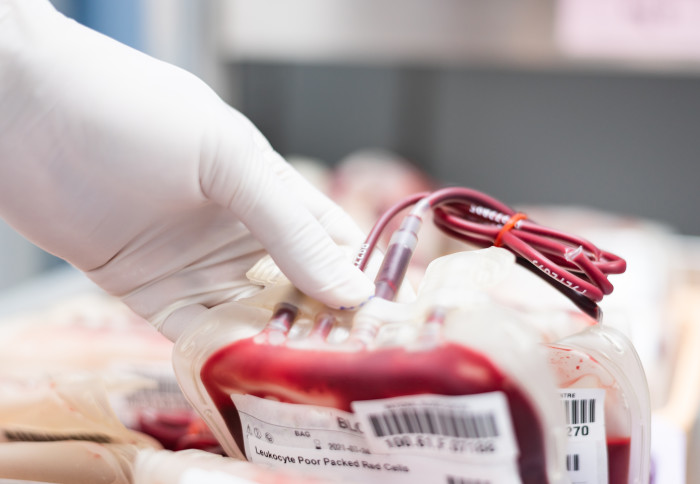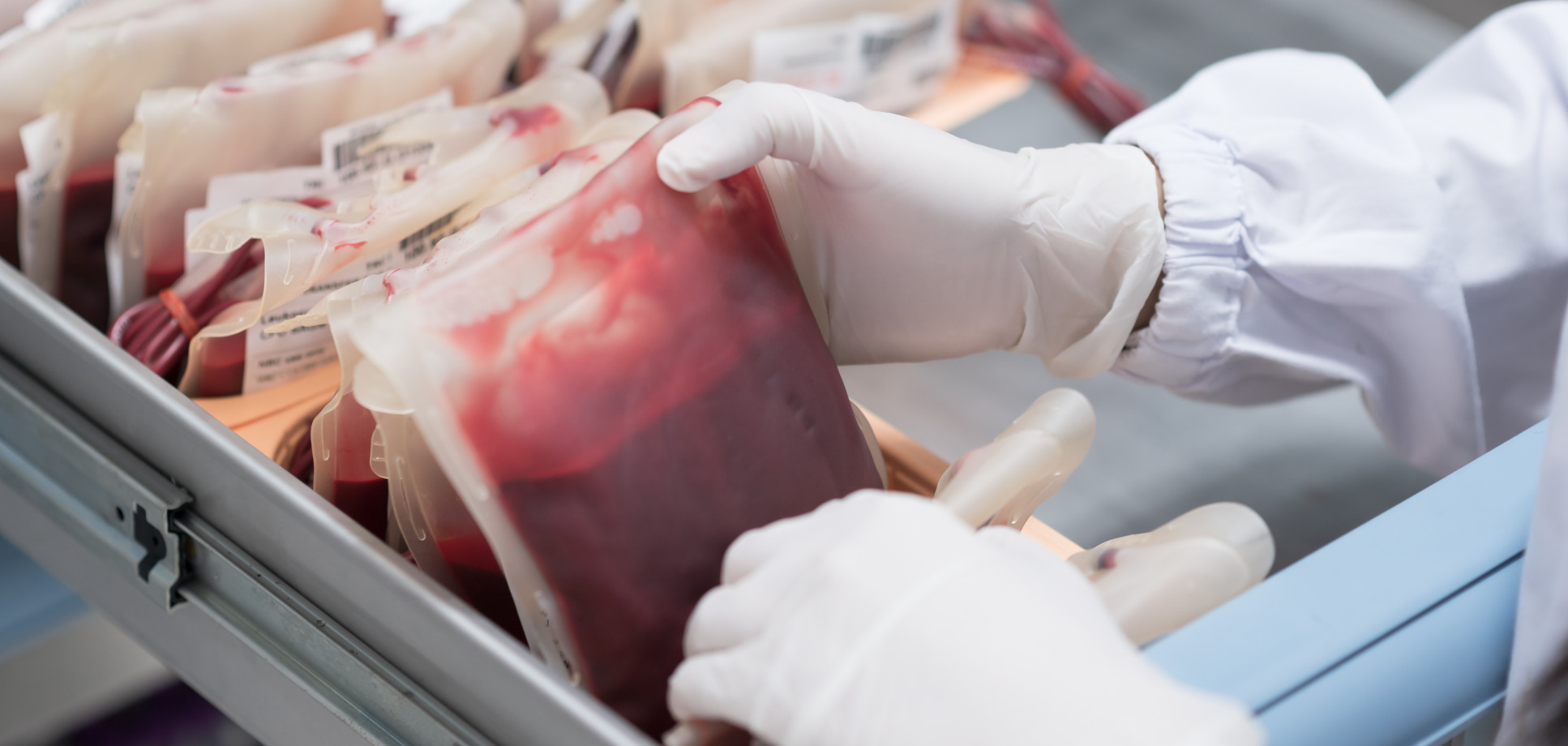

Blood transfusions are life-saving, but blood banks often face shortages.
This issue is particularly grave in sub-Saharan Africa, where children often die waiting for a transfusion.
Though most transfusions in the region are currently given as collected (whole blood transfusions), some services are starting to move towards using transfusions of concentrated red blood cells to mirror international practice. This might increase the number of transfusions from a single donation, but the reasons for transfusion and the patients in need of blood are very different in sub-Saharan Africa than the rest of the world. There is also a lack of data on the benefits of concentrated red blood cells in children with severe anaemia.
Professor Kathryn Maitland, from Imperial College London’s Institute of Global Health Innovation, has recently published a new paper exploring how safe and effective the two types of blood transfusion are for children with severe anaemia in sub-Saharan Africa. The study re-examines data from a trial called TRACT (transfusion and treatment of severe anaemia in African children).
Emily Head spoke to Professor Maitland, who is based in Kenya, to find out more.
Q - How common is severe anaemia in children and how often are blood transfusions of this kind needed?
"Processing blood to make packed red cells is costing blood transfusion services money and time, without benefitting multiple patients, as intended." Professor Kathryn Maitland Professor of Tropical Paediatric Infectious Disease
Professor Kathryn Maitland - In sub-Saharan Africa, in children who are admitted to hospital, severe anaemia is very common, and is largely caused by nutritional and infectious causes (such as malaria, sepsis and intestinal worms) and sickle cell disease. This means the demand for blood transfusion is high.
In the region, most transfusions are needed for children, or complications of pregnancy and trauma. For all these patients, what needs replacing is whole blood (ie, what has been lost). This is different to richer countries, where oncology and surgery are the biggest users of blood transfusion and its components such as plasma and platelets.
Q - What are whole blood transfusions vs packed red blood cells?
KM - When blood is taken from a donor for a transfusion this is called whole blood. It contains all the types of cells and plasma that make up blood. It can be transfused, after safety testing, direct into a patient needing blood. Whereas packed red blood cells are processed to remove all the plasma (and therefore some of the other cellular components), and then has additional fluid added to it so it can be stored before use.

Q - What is current practice in sub-Saharan Africa, and why is the region changing practice towards using packed red blood cells?
KM - Most blood transfusion services in sub-Saharan Africa still issue whole blood packs for transfusion. However, they are being strongly encouraged to follow high-income countries in preparing packed red cells for transfusion.
In high-income countries, plasma is saved to make other products (such as albumin and fresh frozen plasma for other health conditions) so that one blood donation benefits more than one patient. However, in Africa, most blood banks discard all the plasma and cellular products. Processing blood to make packed red cells is costing blood transfusion services money and time, without benefitting multiple patients, as intended.
Some clinical guidelines mention the preference of using packed red cells rather than whole blood on the grounds of safety (as whole blood is considered as being more likely to cause harmful effects rather than packed cells). However, there is no evidence to support these recommendations.
Q - What does your study find about the use of packed red blood cells in children with severe anaemia?
"These results are good news for blood transfusion services, as it reassures them that providing whole blood for children with severe anaemia may lead to better outcomes as well as saving resources." Professor Kathryn Maitland Professor of Tropical Paediatric Infectious Disease
KM - In a secondary analysis of our TRACT transfusion trial, we found that of 3,188 children with severe anaemia, 41% received an immediate whole blood transfusion. Contrary to perceived safety concerns in the clinical guidelines, we found no adverse effects of whole blood compared to packed cells.
However, compared with children who received whole blood transfusions, children who received packed cells did not recover as quickly (their haemoglobin levels did not increase as quickly within 8 hours), which meant that these children then needed more blood transfusions and they had to stay longer in hospital.
This is a problem because it further depletes scarce supplies of blood and it increases infection risk in the child through exposure to more blood donors.
Q - Why does whole blood work better in children than packed red blood cells?
KM - We don’t yet know the mechanism for whole blood providing better outcomes than packed cells. It might be that the current dosing recommendations for packed cells are incorrect.
Nevertheless, providing packed cells for transfusion for this patient group, which is much more expensive for health services, is not supported by the evidence provided in our study.
Q - What are the next steps for your research? Will it change practice in sub-Saharan Africa?
KM - At a stakeholder meeting with blood transfusion services from across Africa many voiced their support for our findings. These results are good news for them, as it reassures them that providing whole blood for children with severe anaemia may lead to better outcomes as well as saving resources. However, this may require a future larger trial which directly compares whole blood to packed cells in order to change guidelines.
One blood transfusion service in Blantyre, Malawi, has developed a new technique to split up whole blood bags to smaller packs (since children often do not need the whole bag). If this is proven to be effective and endorsed by policy makers, this could easily be adopted by blood transfusion services in other countries, and ensure that children receive the treatment they need while maintaining scarce blood supplies.
Main image credit: Shutterstock.
Article text (excluding photos or graphics) © Imperial College London.
Photos and graphics subject to third party copyright used with permission or © Imperial College London.
Reporter

Emily Head
Communications Division

Contact details
Tel: +44 (0)20 7594 6900
Email: e.head21@imperial.ac.uk
Show all stories by this author




Leave a comment
Your comment may be published, displaying your name as you provide it, unless you request otherwise. Your contact details will never be published.